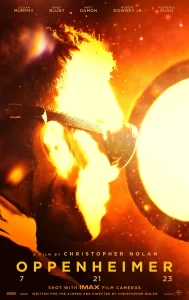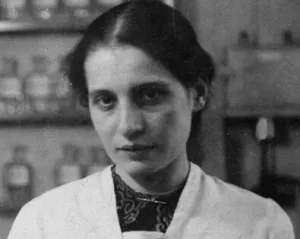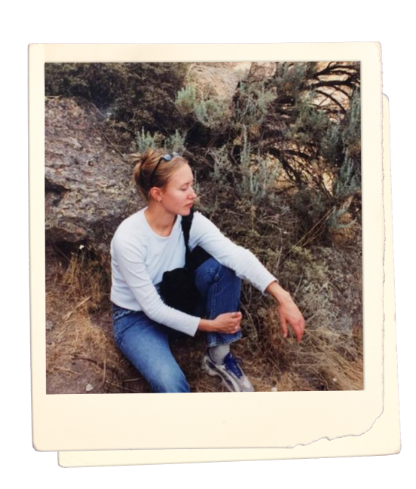The Perfect Quote
Issue #5
August 27, 2023
Dear friends,
I keep thinking my first novel, The Outlier, is done, and then it’s not. I sent back the bulk of my edits in June. Then came a few final edits – a “light Swiffering,” as my editor said. Now I have to look at the copy edits, which are going to require several full days (at least) of my attention. Then I have to write acknowledgments and a dedication, and revise the bio. At some point, I’ll have to look at page proofs. In short, every time I think I can bestow some deep, long-term focus on the next project, I can’t quite.
One recent task was to come up with an epigraph – that quote that precedes the text, intended to suggest the novel’s theme and set a tone. I’m not sure readers really remember them. But for the writer, discovering the perfect epigraph can be exciting. It’s a moment of communing with the wider culture, when we find that some stranger in another time and place expressed just what we’re trying to get at.

…everybody hates a tourist / especially one who thinks / it’s all such a laugh / and the chip stain’s grease / will come out in the bath.
Still brilliant.

“You people with hearts . . . have something to guide you, and need never do wrong; but I have no heart, and so I must be very careful.”
Intrigued? I hope so!
The Mother of the Atomic Bomb
A few years ago, I showed the opening chapters of a novel to a writer friend and my writer husband. She wanted more sex. He wanted more explosions.
“Add more detonations” – literal, emotional, metaphorical – is rarely bad writing advice. Whatever readers’ taste, they generally like it when things happen. But I think a lot about how to hold attention when not delivering actual kinetic explosions.

Oppenheimer is haunted by what he’s done, particularly after the first atomic bombs are used to wipe out a few hundred thousand civilians. Yet like many of his colleagues, he’d felt obliged to develop an American atomic weapon before Nazi Germany succeeded in doing the same.
Could a different story about this time – a story about another kind of hero – be just as engagingly epic? Not every brilliant physicist of the era said yes to the war effort. After World War II, Americans celebrated Lise Meitner as the “mother of the atomic bomb” for having co-discovered nuclear fission. Vienna-born Meitner, who was of Jewish heritage, built her career in Berlin. President Franklin Roosevelt asked her to work on the Manhattan Project and help build a nuclear weapon – and she declined, writing, “I will have nothing to do with a bomb.” She was a committed pacifist until her death in 1968. (Below, Meitner in 1912.)

Meitner, on the other hand, simply said “no,” which I find courageous given that she was already ostracized on multiple counts – as a woman in science, a Jew, and a refugee.
Could you make a summer blockbuster about a pacifist? Working in a lab and writing letters may not compare, visually, to explosions. There’d be no Trinity test in IMAX. But Meitner’s personal struggles were dramatic. Before women were officially admitted to universities, she became a researcher at Friedrich Wilhelm University, where she was barred from leaving her designated work space lest she sully the institution’s all-male halls. She fled to Sweden in 1938, taking a train out of Germany just before the Nazi dragnet closed in. She continued her research and worked on Sweden’s first nuclear reactor, despite further discrimination in her adopted country. I think there’d be plenty to work with, dramatically speaking.
If you want more Oppenheimer – the man and the movie – check out the terrific collection published by my former employer, the Bulletin of the Atomic Scientists, including an extended interview with Nolan. Oppenheimer wrote for the Bulletin and served on its board of sponsors.
Five Faves: Things to do in New Hampshire’s Lakes Region
It’s still summer! For the last 12 years, I’ve spent a portion of July or August on Lake Winnipesaukee in New Hampshire — at 70 square miles, the largest body of water in this lake-dotted region.
The primary reason to come here is to get on or in the warm, clear water, in whatever your preferred mode. I like non-motorized activities like swimming, paddleboarding, reading on the dock, and complaining about jet skis. But sometimes, I’m forced by cabin fever or low kombucha supplies to leave the immediate vicinity of the lake. In which case I like to go to …
Portsmouth, NH. A pretty little city at the mouth of the Piscataqua River, which divides New Hampshire from Maine. It’s one of the oldest cities in the United States, settled in 1623, with much of its historic architecture still preserved. The downtown streets, shops, and waterfront restaurants are busy all summer. For some reason, the treaty ending the 1904-1905 Russo-Japanese war was negotiated here.
Beans and Greens. This mother of all farm stands sells fresh, ripe, produce and prepared food like pies, cookies, and sandwiches. It’s got a petting zoo out back, along with a corn hole court and a beer-garden-slash-music venue. In July, they hosted an Elton John tribute show. In the fall they do a corn maze. (In Gilford.)
Wolfetrap Grill and Raw Bar. This is my favorite restaurant in Wolfeboro. It’s in a breezy waterfront space on Back Bay, with its own dock. I like to chase a half dozen oysters with a lobster roll. Definitely make a reservation. Entrées run from $18 to $39. They also have a fish market. (In Wolfeboro.)
A Mountain. New Hampshire has no shortage of hiking options — 161 miles of the Appalachian Trail pass through the state. This year, we hiked up Mt. Major (1,786 feet) in misty weather. It’s a short, popular hike, often steep and rocky, with spectacular views of Lake Winnipesaukee and the White Mountains on clear days. (Near Alton Bay.)
The Cotton Valley River Trail. If flat ground is more your thing, this 12-mile walking, running, and cycling trail meanders through woods and along waterfront as it makes its way between Wolfeboro and Wakefield.
Let’s Talk
Write to me at eavesdrop@elisabetheaves.com. I read every email, and I’ll try to answer every question.
Happy trails,
Elisabeth
Bad Directions
Subscribe to Bad Directions, Elisabeth’s free newsletter about books, writing, and travel.
